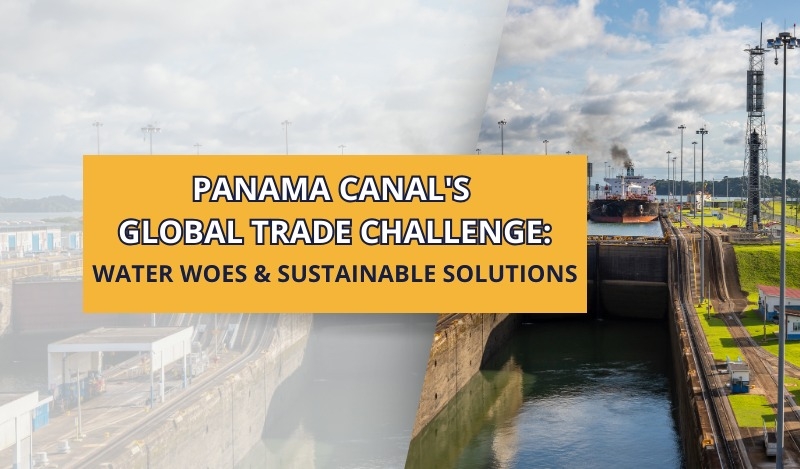News
Panama Canal grapples with Water Woes Impacting Global Trade; Exploring Sustainable Solutions

In the midst of the Panama Canal, a profound crisis is unfolding, causing upheaval in international trade routes. The consequences of an extended dry spell become apparent as vestiges of an ancient forest, submerged more than a century ago to form the canal, resurface. This predicament, affecting a water passage crucial for $270 billion in global trade annually, demands immediate attention.
With water levels plummeting six feet below the norm, the Panama Canal Authority has enforced stringent restrictions on vessel crossings, reminiscent of the 1989 shutdown during the US invasion of Panama. Although a more rain-filled November provided momentary relief, the canal still operates well below its pre-drought capacity, resulting in heightened expenses and shipment delays. The hurdles confronted by the canal mirror broader shifts in global trade influenced by climate change. Acting as a vital conduit for commerce, the Panama Canal manages 3% of worldwide maritime trade and 46% of containers from Northeast Asia to the US East Coast. The ongoing disruptions underscore the imperative for sustainable, enduring solutions.
As an immediate response, water from Lake Alajuela, a secondary reservoir, is being released to accommodate 24 vessels daily during the dry season. Nevertheless, the canal's manager, Erick Córdoba, stresses the necessity for comprehensive measures beyond short-term remedies. One proposed strategy involves damming the Indio River and constructing a tunnel for transporting fresh water to Lake Gatún, the canal's main reservoir. However, this ambitious $2 billion project faces challenges, including the need for congressional approval and local opposition. An experimental approach considers cloud seeding, with a small plane from North Dakota-based Weather Modification Inc. testing the process in Panama. Yet, the effectiveness of cloud seeding in tropical climates remains uncertain.
Critics, such as Jeremy Nixon, CEO of Ocean Network Express Holdings Ltd., express frustration over the perceived sluggish progress of infrastructure projects to tackle water shortages. The canal's predicament results from a blend of climate change and insufficient infrastructure planning. Despite completing new locks in 2016, the canal lacked additional reservoirs to support heightened traffic.
The repercussions of the canal crisis extend beyond trade routes, impacting local communities like Elizabeth Delgado's, whose home faces potential flooding if the proposed reservoir is constructed. Striking a balance between economic development and environmental concerns poses a complex challenge requiring thoughtful consideration.
In addressing the hurdles confronting the Panama Canal, it becomes clear that a comprehensive strategy is imperative. Embracing climate change adaptation, sustainable infrastructure development, and community engagement emerges as vital elements in safeguarding the future of this pivotal global trade route. The global community closely observes as Panama endeavors to recalibrate its system, ensuring the resilience of the Panama Canal amid evolving environmental dynamics.